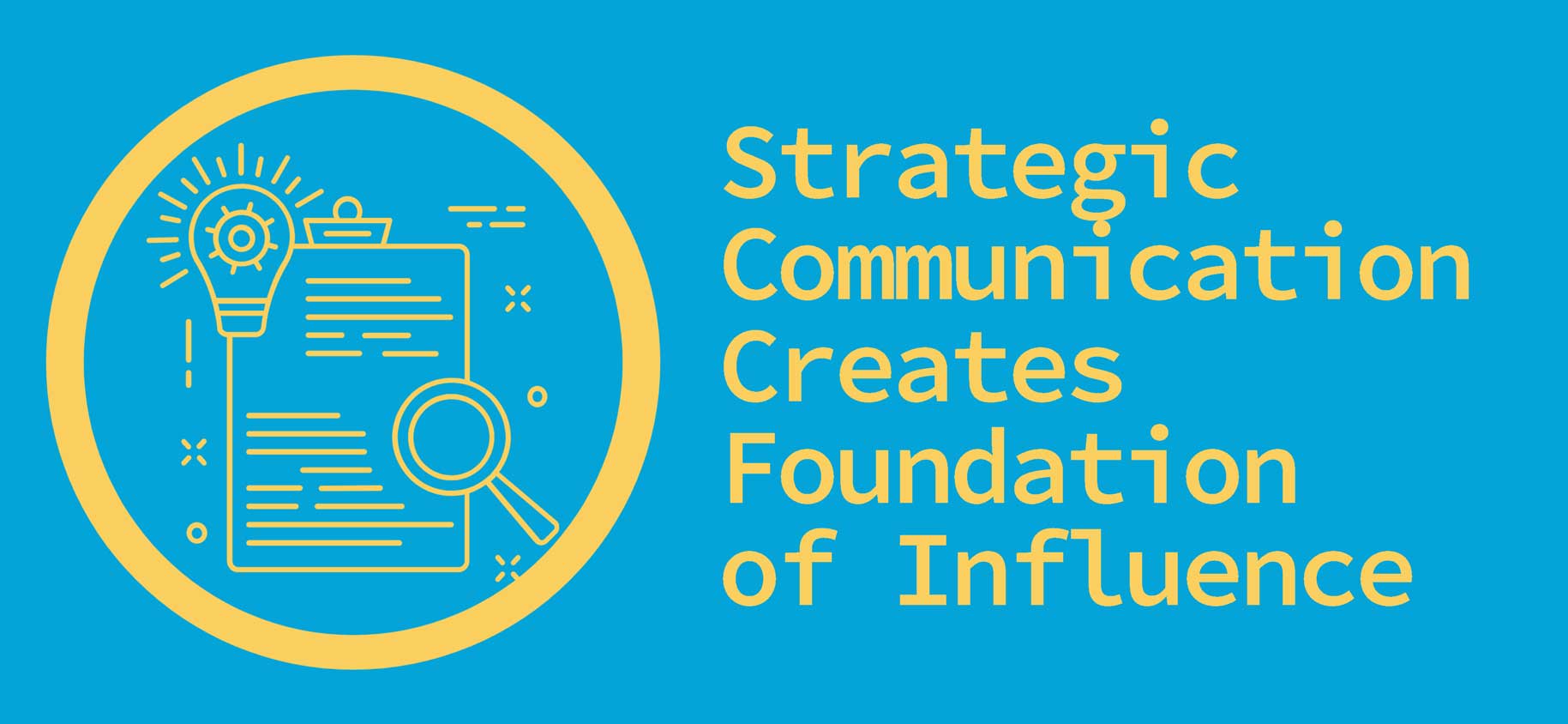When you want to influence others and get projects approve, strategic communication is key. Strategic communication isn’t as hard as you think to achieve and learn.
Are you looking for ways to improve your workplace communication to have a more significant influence on others? Do you want colleagues and co-workers to listen and respond to what you have to say?
If yes, consider implementing change in your strategic communication habits.
While survey after survey emphasizes the importance of influencing and negotiation skills for achieving career success and promotion, influencing is more than that. Influential communication skills are vital in many aspects of the modern workplace—whether you work in cross-functional teams, manage external supplier relationships, or network with prospective clients.
Words are powerful, so use them to your advantage. In this article, we’ll discuss how communication creates a sturdy foundation of influence.
How Co-Workers Communicate
Co-workers use communication skills in many ways, whether in-person through meetings and casual interactions, or virtually through emails and other messaging systems.
Positive professional communication through collaboration is highly effective in the workplace. Leaders must communicate strategically to individuals as well as in group settings, such as presentations and panels.
In an ideal world, every conversation and interaction would drive business growth. Still, there are plenty of examples of poor communication that hinder daily productivity, which is why leaders need to build influential communication skills.
Don’t just repeat what everyone else is saying. Stir interest and influence others by adjusting your workplace communication tactics. But first, what is influence?
What Is Influence?
Negative connotations are surrounding the word “influence” because some people believe it’s about making people do things they do not want to do. However, influence isn’t about deceiving someone against their will.
Influence isn’t about making sales or developing marketing campaigns. And it’s not about being a sycophant to get something you want selfishly. Real influence is about trust. People say “yes” because they believe in the value in what you’re saying, and because they trust you.
However, persuasion and influence are not the same as credibility. When you’ve influenced someone, they voluntarily do something without receiving demands or pressure. To influence is to produce an effect or change with invisible ethical instruments or means.
Positive Triggers That Create Influence
In the 1980s, Robert Cialdini wrote Influence: The Psychology of Persuasion. In it, he outlined the six principles of persuasion—positive triggers that create influence—which are:
- Reciprocity
- Commitment/consistency
- Social proof
- Authority
- Liking
- Scarcity
1. Reciprocity
According to Cialdini, humans are wired to return favors and pay back debts. This is where the classic “treat others as they’ve treated us” phrase stems from.
The principle of reciprocity says that people feel obliged to provide discounts or concessions to others, by nature, if they’ve received similar favors from those people. According to psychology, humans despise feeling indebted to others.
Let’s say that you offer prospective customers a free e-book when they visit your website. It’s full of highly actionable and practical information that will improve their lives and businesses. Based on the principle of reciprocity, visitors will feel obligated to buy one of your products—providing you with a conversion.
2. Commitment
Humans have a deep need to deliver on promises and be seen as consistent. If we publicly commit to something, we are much more likely to follow-through and deliver.
People have associated commitment with their self-image, and strategic communicators have discovered how to use this to obtain influence.
3. Social Proof
We feel validated based on what other people are doing. Social proof is just that—people doing what they observe others doing. We feel safer in numbers.
For example, people are more likely to be late to work if they see their co-workers constantly arriving late. If you see a restaurant full of people beside one that’s empty, you’re going to give the full establishment a try first.
The principle of social proof even more influences people if they’re not self-confident or the people they observe are similar to themselves.
4. Authority
It’s human nature to obey authority figures—even if they ask us to commit objectionable acts.
Job titles and uniforms are both accessories that infuse an air of authority. This authority makes the average person more likely to accept what someone says. In commercials, for example, companies use doctors to head-up their ad campaigns.
5. Liking
The more you like and empathize with someone, the more quickly you’ll be persuaded by them.
If you like someone, it affects the chances of you being influenced by them. Liking is based on sharing similarities or a superficial interest, such as physical attractiveness.
6. Scarcity
When you believe something is demand, and in short supply, you want it more. The last of Cialdini’s persuasion principles is scarcity. It’s the perception that products and services are more attractive when there is limited availability.
We’re more likely to purchase a product if we’re informed that a special deal will expire soon, or the product is about to sell out. The fear of missing out is a powerful motivator that encourages us to act quickly.
How Strategic Communication is Key to Influence
Even armed with these principles, you cannot influence someone without the use of communication. It’s the foundation for any influence principle or tactic.
Social psychologists have found that we have specific shortcuts and signals to protect us and help us make decisions more quickly. Once you understand these shortcuts and signs, you can better influence others and help them know what you’re trying to get them to do or see.
For example, if people are uncertain about your suggestion, or it’s hard for others to understand, they are going to avoid what you suggest. If a manager faces a surprise at work, it often leads them not to take action, or delay until they can consider more facts.
A manager will react to the unexpected news by demanding answers to the questions it triggers. This behavior will derail your effort to be persuasive.
The element of surprise and uncertainty originates from our species’ need to survive. We continually look for what can be harmful to us. Even though the uncertainty that comes from surprise is a survival tactic, this awareness follows us to work.
When we speak unclearly, we ignite this negative shortcut in others. The person receiving our message becomes instantly skeptical of what we have to say. This phenomenon is called processing fluency.
Processing Fluency
The amount of effort or ease it takes for someone to understand your message is called processing fluency. If someone can’t understand what you are saying, their mind has to work harder to understand that information. The more work your listener must do, the less they will trust your message.
Simple communication is key.
According to neuroscience research, our brains view uncertainty and errors similarly. You don’t want your boss or business partner to struggle to understand when you’re communicating a new idea. You don’t want them to feel uncertain about how your suggestion will affect them.
Because of this, effective strategic communication is the first step in influencing any group of people.
Take Time to Fine-Tune Your Influential Communication Skills
The art of influencing through communication doesn’t come naturally to everyone. Strategic communication and influential communication skills are crucial to developing a sense of authority and learning to influence others with ease.
We’re here to give you confidence and the skills you need to inspire change. You’re the expert. We’re just here to pull that expertise out and help you deliver it effectively.
If you’re interested in working with us, click here to learn more about our online and live resources to help you become a messaging expert.


1 thought on “How Strategic Communication is Key to Influence”
Comments are closed.